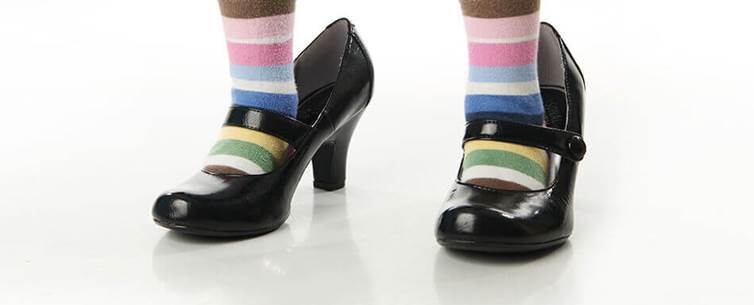If the shoe fits
Published
Measuring small children’s feet can be a bit of an ordeal for busy parents – it’s hard enough to get them to stand still for a moment, let alone check their shoes are the right size!

Shoe Zone recommends parents and caregivers check children’s shoes every six weeks to encourage good foot health and avoid foot pain caused by wearing the wrong shoe size.
A recent study found that 67 per cent of children are wearing shoes that are too small. Nearly half of them are wearing shoes that are one size too small, and one in five have shoes two sizes too small. Only 1 in 3 children in the survey were found to be wearing correctly fitted shoes.
At birth, the foot contains 22 partially developed bones. By school age, this number will increase to 45. Over the next 13 to 14 years , many of these will fuse together to form the 26 bones that make up the mature adult foot.
In worst case scenarios, the wrong shoe size can result in hammer toe, mallet toe and bunion growth, caused by pressure on the big toe joint. It can also contribute to back pain and even headaches.
Anthony Smith, chief executive at Shoe Zone says: ‘Children's foot discomfort can be avoided by regularly checking the fit of their shoes. We recommend checking every six weeks using tools like our online size guides.’
More than half of the parents surveyed said they’d never measured their kid’s foot length but instead relied on sensorial and visual information. A good rule of thumb is ‘the younger the foot, the faster it grows.’
Children should have room to wiggle their toes, but it’s important to avoid buying shoes to ‘grow into’ as over-large shoes can cause as much trouble as shoes that are too small. Shoe Zone recommends using the longer foot as guidance when buying shoes, as the difference in length can be up to half an inch.
How to measure feet
1. Find a flat, hard surface.
2. Place a piece of paper with the edge straight against the wall.
3. Get your child to stand on it with their heel also flush against the wall.
4. Mark on the paper where the longest point of the foot is.
5. Repeat this process with both feet as they might be slightly different sizes.
6.Measure the heel to toe length for each foot.
7. Don't forget about socks: always measure for boots with a pair of socks on for the most accurate fit.
8. Avoid sizing up: it may be tempting to buy a bigger size, to get more wear for children, but this could increase the risk of tripping, blisters and future foot health issues.
Four signs your child is wearing the wrong size shoe
1. Excessive, persistent foot pain.
2. Damaged toenails – incorrectly fitted shoes can lead to ingrown toenails.
3. Struggling to walk properly.
4. Changes in foot appearance – foot deformities and changes in foot appearance are often caused from wrongly fitted shoes.
Find measuring guides for boys and girls online at ShoeZone.com







